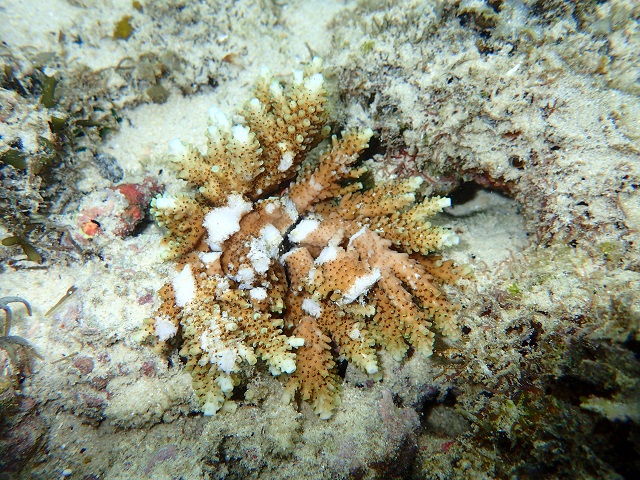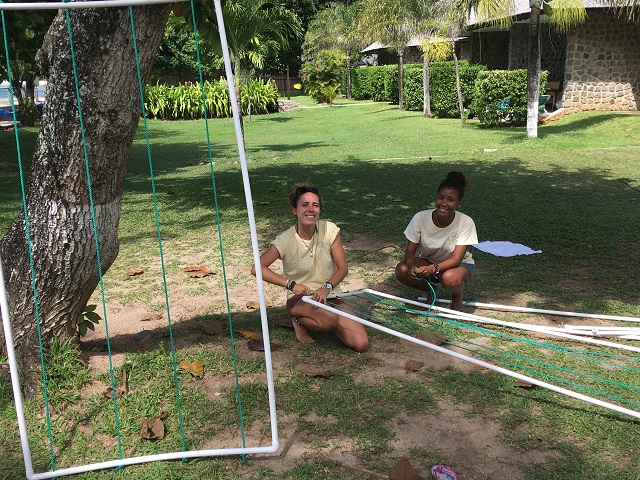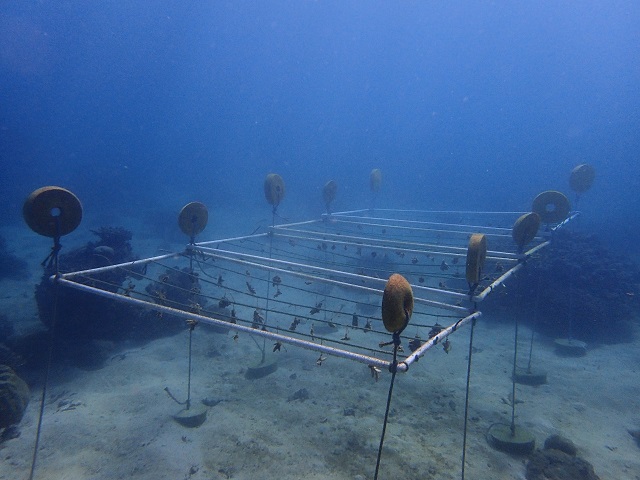'Unlock the Sea,' programme to save Seychelles' corals, moves to 2nd phase
Conservation |Author: Daniel Laurence Edited by: Betymie Bonnelame | June 25, 2017, Sunday @ 10:56| 7957 views
Le Meridien Fisherman’s Cove hotel has launched the second phase of its ‘Unlock the Sea’ programme. (Marine Conservation Society Seychelles)
(Seychelles News Agency) - Seychelles' Le Meridien Fisherman’s Cove hotel has launched the second phase of its ‘Unlock the Sea’ programme, which is aimed at restoring the coral reef in the north-western coast of Mahe, the nation's main island.
The general manager of Le Meridien Fisherman’s Cove hotel, Romain Chanet, told SNA that protecting the corals is a great step to ensure the continuity of Seychelles' marine resources.
“Drawing upon the success of our ‘Unlock the Sea’ programme, and seeing the interest and engagement from our guests, we see this as an opportunity for us to play an active role in marine life conservation,” said Chanet.
Last year, Le Meridien Fisherman’s Cove launched “Unlock the Sea”, a unique programme to help the creative and curious-minded traveller experience and explore the island and ignite their inspiration with an incredible underwater encounter.
 |
| The level of coral bleaching currently in Seychelles is similar to the bleaching catastrophe which happened in 1998 when up to 97 percent of corals in some areas bleached. (Marine Conservation Society Seychelles) Photo License: CC-BY |
Created in partnership with the Marine Conservation Society Seychelles (MCSS), the interactive programme guided by marine experts helps guest discover a treasure trove of marine life around the island through a curated snorkelling experience. Through the programme, guests can also experience an underwater art gallery or send an underwater postcard to friends and family.
Chanet told SNA that: “We believe it is our responsibility to make a valuable difference to the environment in which we operate.”
In the restoration process, coral fragments or pieces of coral broken by storms, snorkelers, divers or anchoring boats are used as ‘corals of opportunity’. They are carefully collected and nurtured in coral nurseries in its natural population that have been set up exclusively for this purpose.
The level of coral bleaching currently in Seychelles is similar to the bleaching catastrophe which happened in 1998 when up to 97 percent of corals in some areas bleached and caused many reefs around the islands to collapse into rubble.
 |
 |
| The interactive programme guided by marine experts helps guest discover a treasure trove of marine life around the island. (Marine Conservation Society Seychelles) Photo License: CC-BY |
Nature Seychelles, a not-for-profit organisation, started the country’s first scientific coral restoration program seven years ago to reverse the trend. Taking corals that had survived the 1998 bleaching the organisation grew over 45,000 fragments of corals in underwater nurseries and planted a degraded area in the Cousin Island special reserve covering the size of a football field.
The Principal Secretary of Environment, Alain de Comarmond, told SNA the ministry wholly encourages these types of activities by businesses and hotels to preserve the environment.
“As we are vulnerable to the impact of climate change and warmer water, we need the active support of every sector in the society to help in the quest to protect and restore our coral reef.”
Bleached coral continues to live, but without its colourful symbiotic algae it loses most of its food source and becomes extremely vulnerable to disease, predators and invasive organisms like seaweed and sponges. If the water temperature remains high, the coral will die.
Seychelles, a group of 115 islands in the western Indian Ocean, is very vulnerable as it is closer to the equator and thus the water is warmer than neighbours Mauritius and Reunion, an overseas French department in the region.
The next phase of the ‘Unlock the Sea’ programme is the construction of nurseries outside the corals' natural environment. The process is expected to take between six to 12 months depending upon the size and the species of corals.
Back
